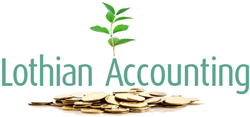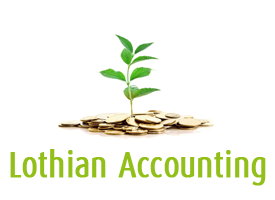The Chancellor’s Autumn Statement 2015 and personal tax
December 3, 2015

There were no real shocks from the Autumn Statement last Wednesday 25 November apart from an apparent U-turn by the Government which announced there will now be no cuts in working or child tax credits for 2016/17.
The big tax news for individual taxpayers is an extra 3% stamp duty land tax charge on the purchase of additional residential properties from 1 April 2016. This will not however apply to residential properties in Scotland which are subject to Land and Buildings Transaction Tax (LBTT)).
Other key announcements, some or all of which will affect you as a UK resident taxpayer:
- Self-assessment changes to digital tax account! The government is introducing digital tax accounts for the self-employed and landlords for 2016/17. HMRC will allow interested parties to take part in its consultation on how landlords, the self-employed and also businesses can update HMRC quarterly on their tax affairs by 2020.
- Interest savings tax free allowance: from April 2016 there will be an allowance of £1,000 for basic rate taxpayers (and £500 for higher rate taxpayers). This is in addition to the personal tax allowance
- ISA update: Individual Savings Account (ISA) investment will include crowdfunded debt-based securities from 6 April 2016. There are changes to ensure the tax-free status of individual ISAs is retained following death. There is no change to ISA, junior ISA and child trust fund annual limits.
- Big changes to pension tax relief in the pipeline! One of the Government’s options is that instead of receiving tax relief on the contribution, pension savings will work more like an ISA, with a Government top-up and tax-free extraction on retirement. The Government will provide an update on this at next year’s 16 March Budget.
- Pay Capital Gains Tax (CGT) early: CGT will need to be paid within 30 days of the sale of a residential property from April 2019.
- The new tax-free childcare scheme has been delayed and will be available from early 2017 to parents that jointly earn below £100,000 and where the weekly income of each parent is be at least 16 hours at the national living wage.
- Supplement of 3% on diesel company car benefit in kind remains until April 2021.
- Tax incentivised investment schemes: energy generation activities are being excluded from Enterprise Investment Schemes (EIS), Venture Capital Trusts (VCT) and Social Investment Tax Relief (SITR) schemes from 6 April 2016.
- Entrepreneur’s relief on Capital Gains: the use of entrepreneur’s relief, where capital gains are taxed at 10% (rather than 18% and 28% rates) was restricted in 2015-16. The Finance Bill 2016 may now ensure entrepreneur’s relief is allowed where a genuine commercial transaction exists.
Stamp Duty Land Tax (SDLT) changes
There will be a 3% rate applied onto the existing SDLT where a second or additional residential property (over £40,000) is purchased on or after 1 April 2016.
The use of the property is irrelevant and so it will apply whether it is to be rented or used as a second home.
Companies and funds making “significant investments in residential property” (thought to be a minimum of 16 residential properties) are likely to be exempted from the additional charge.
SDLT does not apply in Scotland so this will not affect the purchase of Scottish residential properties which are subject to land and buildings transaction tax (LBTT).
From April 2017, SDLT will be paid within 14 days of completing a property purchase rather than the current 30 day limit.
Digital tax accounts
The government has announced that it will invest £1.3 billion to transform HMRC into one of the most digitally advanced tax administrations in the world.
As announced in the Summer Budget 2015, the government wants to introduce digital tax accounts to replace the current self-assessment system.
This should lead to HMRC collecting tax payments earlier in most cases.
Key details so far are:
- Digital tax accounts for all small businesses and individuals will be introduced by 2016/17.
- Most businesses, landlords and the self-employed will need to update HMRC quarterly regarding their tax affairs by 2020 –further details in the consultation due in 2016.
- The aim of the consultation is to look at ways to simplify tax payments with suggestions of tax payable as profits arise.
HMRC has issued a user-friendly document to explain how it intends digital accounts to work: HMRC digital accounts document
ISA Update
The Government consulted on whether to extend existing share ISA investment to include debt securities (effectively loans) offered via a crowdfunding platform, for example Funding Circle. The Government has now agreed to include these type of securities as qualifying ISA investments. The link to the consultation is here: Crowdfunding ISA investment consultation
The Government will continue to explore the case for including equity based crowdfunding (investment in shares).
The ISA, junior ISA and child trust fund annual subscription limits are to be frozen at 2015/16 levels in 2016/17. These are £15,240 for ISA and £4,080 for junior ISA and child trust funds.
Finally, the tax-free status of an individual’s ISAs will be retained by his personal representatives following his death. Currently the deceased’s ISAs are taxable during the administration period. This change is expected to be included in the Finance Bill 2016.
Pensions tax relief changes in the pipeline
The Government announced changes to pension tax relief in the Summer Budget 2015, which restricted the benefits of pensions tax relief for those with incomes, including pension contributions, above £150,000. The Government has now gone through a consultation process on possible further changes to the way in which pensions work: Pensions tax relief consultation
One of the options is that instead of receiving tax relief on the contribution, the pension savings will work more like an ISA, with a Government top-up and tax-free extraction on retirement. The Government will provide an update on this at the March 2016 Budget.
Tax-free childcare scheme
The government welcomed a judgment from the Supreme Court in July 2015 that found the government’s proposals for delivering Tax-Free Childcare to be clearly lawful. This has delayed the launch of the new scheme and so the existing Employer‑Supported Childcare scheme will remain open to new entrants until Tax-Free Childcare is launched in early 2017.
Under the new scheme, eligible families will get 20% of their annual childcare costs paid for by the Government. The way it works is that for every 80p they pay into a newly-created Childcare Account, the Government will contribute 20p. This could mean up to £2,000 per child which is the maximum relief available (the scheme assumes a maximum of £10,000 per year childcare costs per child).
To be eligible for Tax-Free Childcare, families will need to:
- Have one or more child aged under 12 when the scheme starts in 2017.
- Work (either employed or self employed) at least 16 hours a week, being paid the National Living Wage or higher – this means both of you if you’re in a couple.
- Earn under £100,000 a year. This applies to both of you if you’re in a couple (so if one earns more than £100,000, then you can’t access Tax-Free Childcare).
- Not be claiming tax credits (this includes the childcare element of Working Tax Credit) or universal credit.
Diesel company car supplement
Currently the appropriate percentage used to determine the amount of tax due on an employee’s use of a company car is three percentage points higher if the car in question runs on diesel.
That 3% supplement was due to be abolished for 2016/17 onwards, but the Chancellor announced today that the supplement will remain in place until April 2021.
Tax incentivised investment
All remaining energy generation activities will be excluded from Enterprise Investment Schemes (EIS), Venture Capital Trusts (VCT) and Social Investment Tax Relief (SITR) schemes from 6 April 2016.
The primary aim of these schemes is to provide funding for small companies but often as part of new investment some reorganisation of capital may be needed. This can involve the need to purchase the shares of existing shareholders (called “replacement capital”).
There will now be increased flexibility for replacement capital within the EIS and VCT schemes, all subject to state aid approval, but this should make it easier for investors and companies to operate within the scheme.
Entrepreneur’s relief
The use of entrepreneur’s relief, where capital gains are taxed at 10% (rather than 18% and 28% rates) was restricted in 2015-16.
Good news! The Finance Bill 2016 may now ensure entrepreneur’s relief is allowed where a genuine commercial transaction exists.
Further information is contained at ICAEW technical release
If you would like to talk more about how the Chancellor’s Autumn Statement might affect you, please call me or drop me an email.






